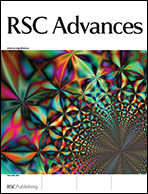Self-assembled three-dimensional graphene/OMCs hybrid aerogels for high-rate supercapacitive energy storage
Abstract
In this work, ordered mesoporous carbons (OMCs) were incorporated with graphene oxide (GO) and self-assembled into graphene/OMCs hybrid aerogels through a facile hydrothermal route. The microstructures and morphologies of as-synthesized samples are characterized by X-ray diffraction (XRD), field emission scanning electron microscopy (FESEM), transmission electron microscopy (TEM) and nitrogen adsorption/desorption experiments. Electrochemical techniques such as cyclic voltammetry (CV) and electrochemical impedance spectroscopy (EIS) measurements are used to systematically study the effects of microstructure and morphology of the samples on their capacitance and conductivity. The experimental results indicated that the microstructures and electrochemical performances of the products could be effectively tailored by the OMC/GO mass ratio. The as-prepared materials with an appropriate proportion of OMCs can efficiently prevent the adjacent graphene sheets from aggregation, and then develop into porous nanostructures with interconnected conductive networks, which could provide fast ionic channels for electrochemical energy storage. A specific capacitance of 191.2 F g−1 is achieved for graphene/OMCs hybrid aerogels, which show high rate capability and excellent cycling stability.


 Please wait while we load your content...
Please wait while we load your content...